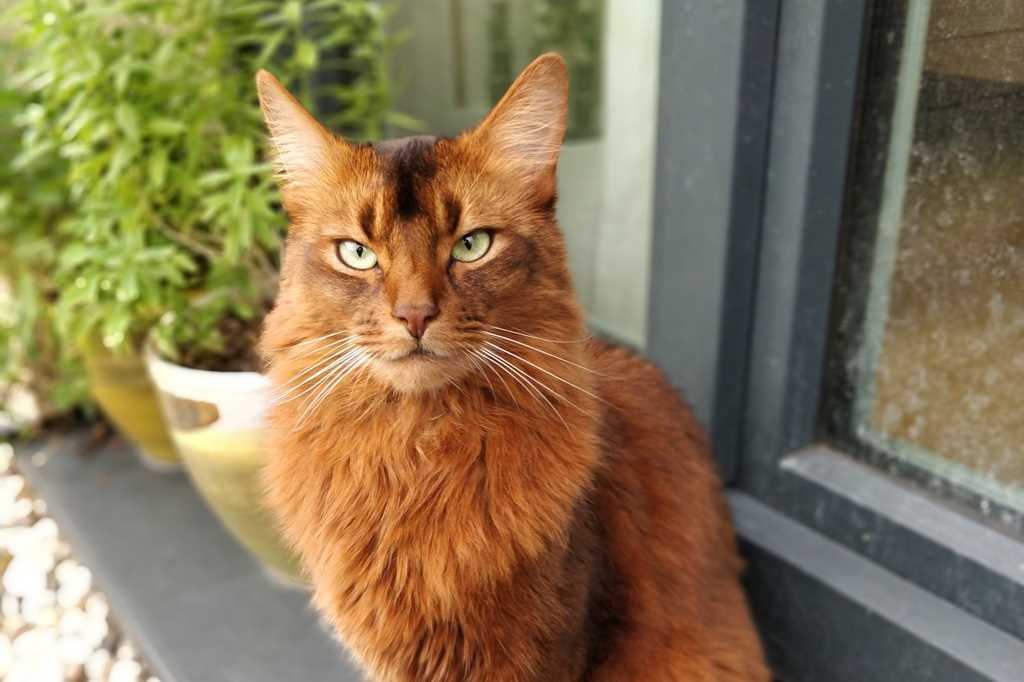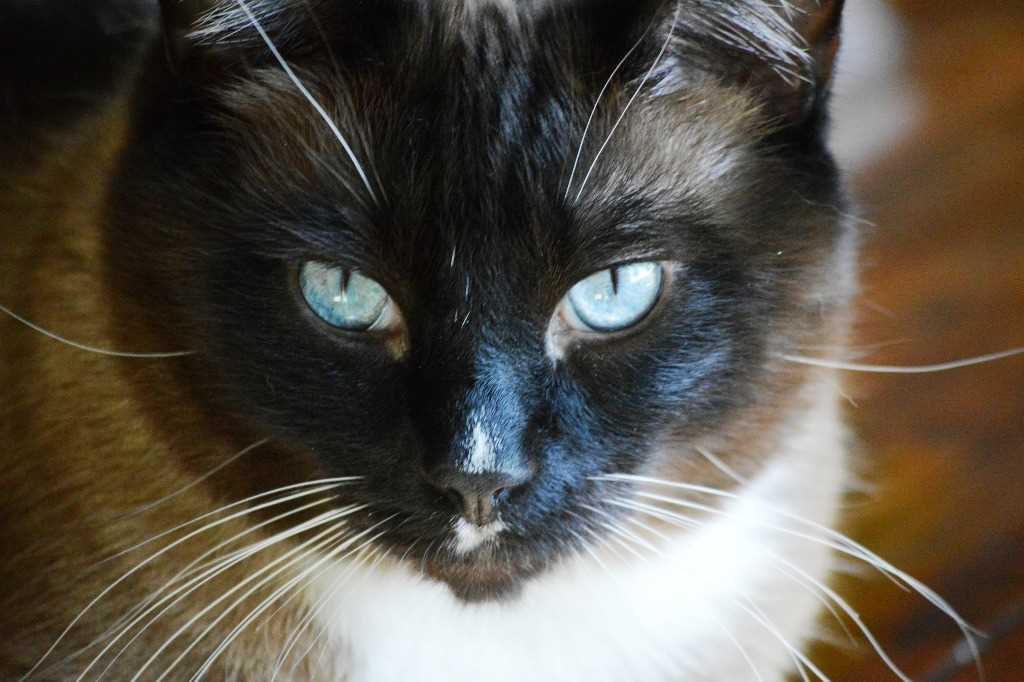The Somalian cat is a beautiful long-haired Abyssinian. It is also called a fox-cat because of its tail, which resembles a fox’s tail. It is not a very well known cat, but it is slowly attracting a lot of interest because of its soft, voluminous fur, with the characteristic that in an alternation of different light and dark bands of each individual hair, it produces shiny and vibrant reflections.
Its origin is a bit uncertain, it definitely comes from an Abyssinian but crossed with long-haired cats, thought to be Persians, and at first it was not really considered in breeding when in a litter of Abyssinians every now and then a long-haired specimen was born. The long-haired gene in these cats is recessive, so very few were born and discarded. Only in 1967 a breeding programme of long-haired Abyssinian cats was started in the USA, and to diversify it from the Abyssinian it was called Somali, because of the closeness of Somalia to today’s Ethiopia, which before was called Abyssinia. But we have to reach 1972 to have the first official litter of Somali cats.
Character of the Somalian cat
The character of the Somali cat is the same as the Abyssinian, that is lively and sociable. It is not considered a purely indoor cat as it needs to move, run and be outdoors. It is exuberant and hyperactive, but also cuddly and very attached to its human, whom it tends to follow everywhere. As a disposition, he is rather independent and must be accustomed from an early age to a minimum of obedience, even using a little wrist, because he tends to do as he likes. He tends to avoid reprimands and mischief a little too much, only to be forgiven with rich effusions and purrs.
He is considered to be a perfect thief because at the slightest distraction from humans, he tends to grab food from pots and pans, plates and anything left unattended. This cat is an expert hunter, so it would be useful if it had a secure garden where it could hunt mice, insects and butterflies.
The Somali cat can’t stand loneliness, so if you’re not at home a lot, it’s a good idea to take another cat from the same litter with it, as it will certainly get on well with them, whereas it will have a harder time with other cats, being a dominant feline. An interesting friendship can also be formed with a dog, if you give it a quiet place to go when it gets tired of playing. He is very interested in what is going on around him and wants to take an active part. It is a great jumper and loves high places, in fact in the house it will often be found on the highest furniture or curtain rods.
It is not suitable for elderly people as it is too exuberant. It is better with children, but it must feel at ease with them, otherwise it tends to avoid them. It is curious about strangers, so it approaches them and playing with it is the best way to make friends.
Appearance of the Somalian cat
Regal is the name that comes to mind when looking at this cat. When you look at the Somalian cat, with its proud, intense gaze and elegant, flowing movements, you think of a wild feline, but it is a beautiful domestic cat. It is a medium-sized cat, the male usually weighs around 5 kilograms and the female slightly less. It is an agile and graceful cat with a robust musculature.
The head has soft features and a slightly curved profile. The ears are rather big, wide at the base, slightly rounded at the tip. The eyes are very beautiful, almond-shaped, slanted, lively and expressive, ranging from amber to gold to green, with a dark outline that makes them stand out even more.
The legs are long and slender, well proportioned, with small, oval feet. The tail is quite long with a long and very thick coat and usually ends in a dark-tipped plume.
Finally, the coat is what distinguishes the Somali Cat from the Abyssinian. The coat is long, smooth and very soft, it has the particular tipping with 3 or 4 streaks of colour for each coat of which the base is always lighter and darkens as it reaches the tip. The most popular colours are apricot base and dark hazelnut and brown shades, but other colours can also be found such as hare, blue, cinnamon and deer, as well as fawn and silver, although these are rarer.
Care and health of the Somalian cat
Caring for the Somali cat’s coat is quite simple. As it has almost no undercoat, it loses very little except when it moults, so a brush a couple of times a week is enough to keep it smooth and soft.
This breed enjoys excellent health and is not subject to any particular pathologies. As it has no undercoat it is sensitive to the cold, therefore it is best not to take it out on winter days. It is very active and therefore needs more food than it should, but must always be controlled as it tends to eat much more than it needs.


